Disclosure: This article contains affiliate links. We may earn a commission from purchases at no extra cost to you, which helps our travel content.
The first time I glimpsed Meteora's impossible rock formations from the train window, I understood why the name translates to 'suspended in air.' Six monasteries perched atop massive stone pillars dominate every guidebook and Instagram feed. But during my week of exploration last October, I discovered Meteora holds secrets that most visitors never see—ancient hermit caves carved into vertical cliff faces, hidden viewpoints that offer solitude among the crowds, and forgotten pathways once used by monks seeking isolation. As someone who's photographed ceramics workshops from Kyoto to Oaxaca, I've developed a knack for finding the overlooked corners of well-traveled destinations. In Meteora, this meant venturing beyond the monastery parking lots and tour bus routes to discover the raw, untamed landscape that first drew Byzantine hermits here in the 9th century. What follows is my guide to experiencing the Meteora that exists beyond the postcard views—one that requires sturdy hiking boots, a sense of adventure, and a willingness to embrace the unknown.
Preparing for Meteora's Hidden Side
Before diving into Meteora's lesser-known treasures, proper preparation is essential. This isn't the Greece of beach umbrellas and tavernas—it's a landscape of sheer drops, unmarked paths, and sometimes challenging terrain.
I based myself in Kalambaka, the main town below the rocks, staying at a small guesthouse run by a local family who shared hand-drawn maps of paths their grandfather once used. While the monasteries operate on strict schedules (and dress codes), the wilderness between them follows no such rules—except those of common sense and safety.
For navigation, I relied on a combination of offline maps and a dedicated hiking GPS which proved invaluable when phone signals disappeared between the massive rock formations. The device's 8GB of internal memory allowed me to download detailed topographic maps of the region before arrival.
Physical preparation matters too. While you needn't be an elite athlete, comfortable navigating uneven terrain and handling some light scrambling is necessary. I spent the month before my trip doing stair workouts and hill training hikes—and was grateful for every minute of preparation when facing Meteora's steep ascents.
Finally, timing is everything. Fall offers the perfect balance—summer crowds have dissipated, temperatures have dropped to comfortable hiking levels (I experienced pleasant 65-75°F days), and the changing foliage creates a stunning contrast against the grey stone pillars.
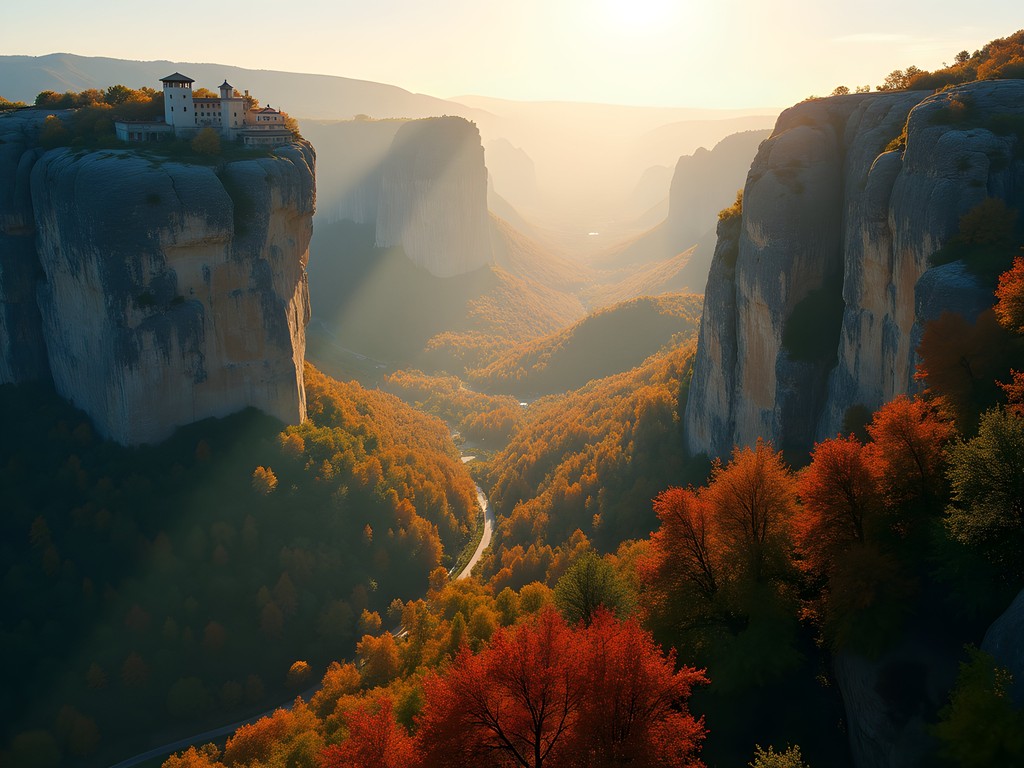
💡 Pro Tips
- Book accommodation in Kalambaka or Kastraki rather than day-tripping from Athens
- Download offline maps before arrival—cell service is spotty between rock formations
- Pack microspikes if visiting in late fall when morning frost can make rocks slippery
The Forgotten Hermit Caves
My fascination with Meteora's caves began when I spotted a tiny opening in a cliff face while flying my drone near the Great Meteoron monastery. What appeared to be merely a shadow revealed itself as a perfectly carved doorway when viewed through my drone's camera. I later learned this was just one of dozens of hermit dwellings scattered throughout the formation—many predating the famous monasteries by centuries.
Accessing these caves requires a combination of research, local knowledge, and sometimes pure serendipity. The most accessible cluster lies along what locals call the 'Hermit's Path'—an unmarked trail beginning near the Monastery of St. Nicholas Anapausas. I set out at dawn with my headlamp illuminating the path, which proved essential when exploring the darker recesses of these ancient dwellings.
The caves themselves range from simple indentations to elaborate multi-room complexes with carved altars and faded Byzantine frescoes. In one particularly moving space, I discovered finger-worn grooves in the stone where countless prayers had been said over centuries. As someone who works with clay, I found myself running my fingers along these same impressions, feeling a connection across time with those who sought solitude in these extraordinary spaces.
The most spectacular cave I discovered required a challenging scramble up a near-vertical path marked only by faded red dots. Known locally as 'Badovas' or the 'prison cave,' it features a natural opening that frames the monasteries perfectly—nature's own viewfinder that few tourists ever glimpse. I spent nearly two hours here, watching light transform the valley below while imagining the hermits who once called this austere space home.
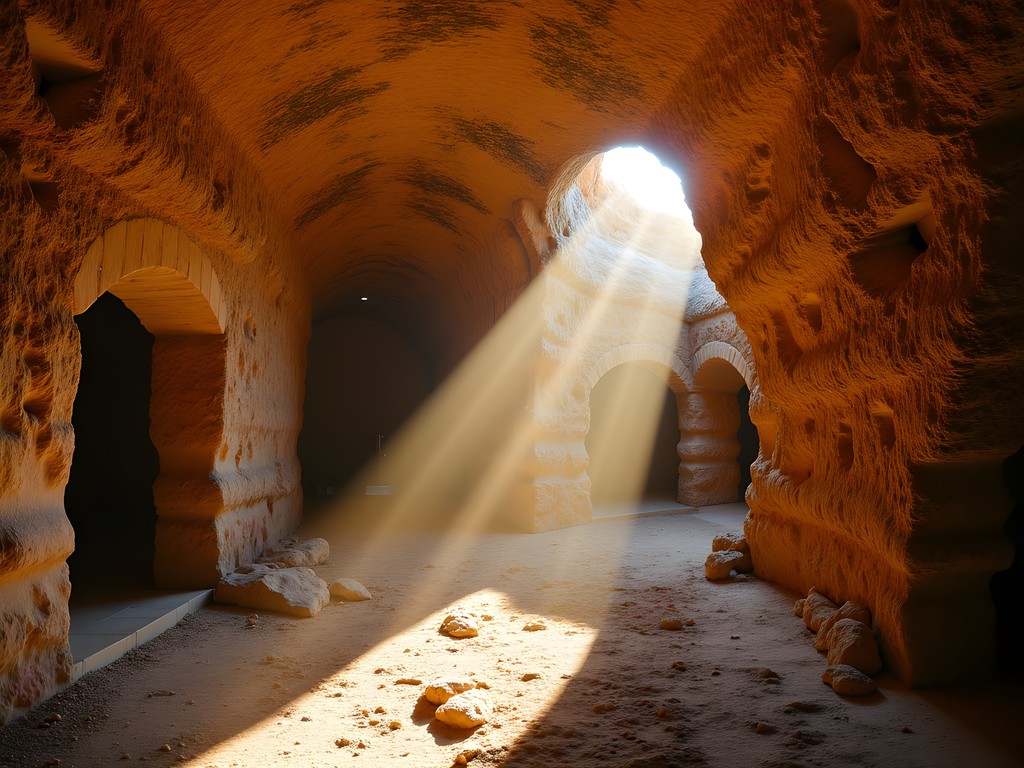
💡 Pro Tips
- Ask for Dimitris at Kalambaka's information center—he knows the safest routes to several hermit caves
- Always carry water and a headlamp even for short cave explorations
- Respect any ropes or barriers—some caves are actively being preserved by archaeological teams
Secret Sunrise Spots Beyond the Crowds
Meteora at sunrise is magical—that's no secret. What remains hidden from most visitors are the viewpoints where you can experience this magic without jostling for tripod space with dozens of other photographers.
My favorite discovery came on my third morning, after a local ceramic artist I'd befriended sketched a route on my map leading to what she called 'Dragon's Back'—a narrow ridge offering 270-degree views of both the monasteries and the Pindos mountains beyond. Reaching it required a 45-minute pre-dawn hike with careful navigation around several false paths.
I arrived just as the horizon began to glow, setting up my travel tripod on a precarious but stable rock outcropping. The lightweight carbon fiber construction made carrying it up the steep path manageable, and its stability proved essential for capturing long exposures as the light gradually transformed the landscape.
Another remarkable viewpoint lies directly opposite the famous Holy Trinity monastery but requires navigating what locals call the 'goat stairs'—a natural formation of rock steps leading to a plateau that few tourists ever reach. I spent a peaceful evening here, watching sunset paint the monastery walls gold while a shepherd moved his flock through the valley below—the only sounds being distant bells and the occasional call of circling ravens.
Perhaps my most treasured discovery was a small cave opening positioned perfectly to frame the Roussanou monastery at sunrise. I found it by chance while exploring an unmarked path and returned the next morning with my drone. The resulting images—monastery emerging from dawn mist, framed by ancient stone—remain some of my favorite photographs from Greece.
These viewpoints offer more than just photography opportunities; they provide the increasingly rare gift of solitude in one of Greece's most visited destinations.
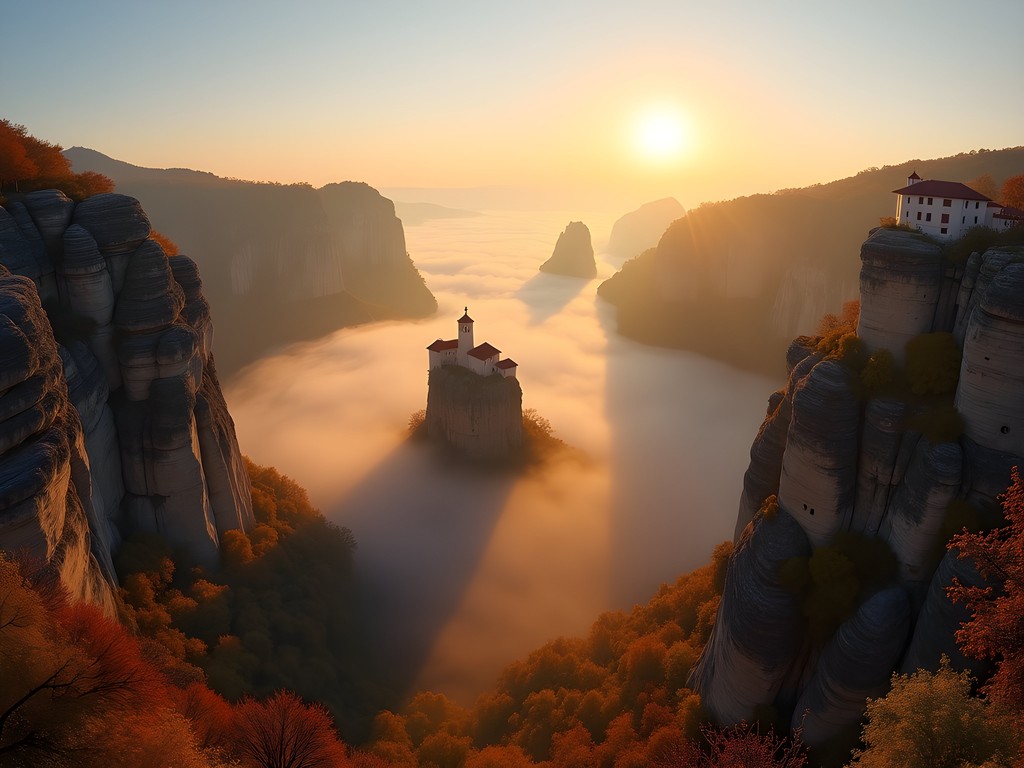
💡 Pro Tips
- For pre-dawn hikes, prepare your gear the night before and use GPS coordinates rather than visual landmarks
- Ask local shepherds (with a smile and basic Greek phrases) for directions—they know hidden paths tourists never find
- Bring a thermos of hot tea or coffee to enjoy while waiting for perfect light
The Abandoned Skete of St. Antonios
While researching Meteora's history in a dusty corner of Kalambaka's library, I stumbled upon references to a structure called the 'Skete of St. Antonios'—a smaller monastic dwelling that predated several of the main monasteries but had long since been abandoned. Most modern guidebooks mention it only in passing, if at all.
Locating it became my mission for two full days. After several false starts and dead ends, I finally discovered the narrow path leading to its remains—a route beginning behind Agios Stefanos monastery that quickly disappears into thick forest before emerging on a rocky outcrop.
What awaited wasn't the intact structure I'd imagined but something far more atmospheric: stone walls partially reclaimed by nature, doorways opening to sky instead of rooms, and a small chapel space where fragments of centuries-old frescoes still cling to crumbling plaster. Standing amid these ruins, with valley views that rivaled any monastery's, I understood why this location had been chosen—and wondered why it had been abandoned.
Exploring required careful footing and my trusty hiking boots proved their worth on the uneven terrain. Their Vibram soles provided crucial grip on smooth rock surfaces that have sent many unprepared visitors sliding.
The most extraordinary feature was a perfectly preserved cistern—a testament to the engineering skills of medieval monks who carved channels into the rock to direct rainwater into this life-sustaining reservoir. I spent hours photographing the play of light across these ancient stoneworks, marveling at how they'd withstood centuries of Meteora's harsh weather.
The skete offers something increasingly rare in our hyper-documented world—a chance to discover something that hasn't been photographed thousands of times before. I encountered not a single other visitor during my exploration, making it feel like a personal discovery in a landscape otherwise defined by established tourism routes.
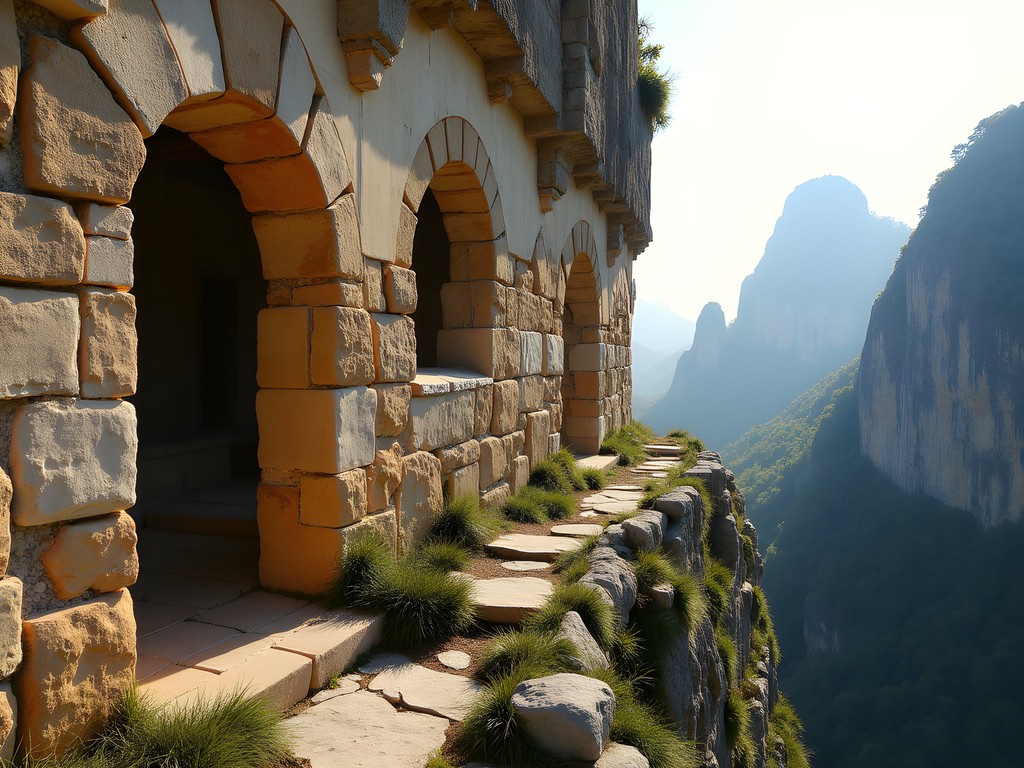
💡 Pro Tips
- Bring binoculars to examine frescoes without touching fragile surfaces
- Visit midweek when fewer hikers are on the trails
- Look for the carved cross on a boulder that marks the correct path junction
Bouldering and Climbing Meteora's Hidden Faces
Long before Instagram made Meteora famous, rock climbers discovered its potential. While commercial climbing now focuses on a few popular routes, I was determined to find spots where local climbers go to escape the crowds.
My search led me to Ziogas, a grizzled climbing veteran who runs a small gear shop in Kastraki. Over Greek coffee strong enough to stand a spoon in, he sketched locations of several 'local only' bouldering areas on my map. These weren't the established routes featured in climbing guides but smaller formations perfect for bouldering—no ropes required, just crash pads and good spotting technique.
The most remarkable area, which Ziogas called simply 'The Garden,' lies in a hidden valley accessible only through a narrow passage between two massive pillars. Here, dozens of perfect bouldering problems range from beginner-friendly to expert-only overhangs. I spent a full day here with my crash pad, which provided essential protection when attempting problems beyond my skill level.
For those seeking roped climbing without crowds, Ziogas directed me to the north face of Pixari pillar—a massive formation that most tourists never circle completely. Here, several moderate routes established in the 1980s offer spectacular climbing with views across to monasteries. I'm no elite climber, but the solid handholds and well-protected routes made for an unforgettable day on the rock.
What makes Meteora's climbing unique isn't just the quality of the rock but the surreal setting. Where else can you chalk up your hands while bells ring from centuries-old monasteries above? Or top out a climb to find yourself eye-level with a building constructed by hand over 500 years ago?
While climbing, I met Dimitris, a local who has established dozens of routes throughout the area. He shared stories of climbing alongside monks who occasionally venture out from monasteries to scale the same rocks their predecessors once climbed using only ropes and determination—a living connection to Meteora's original purpose as a place where humans challenge themselves against stone and gravity.
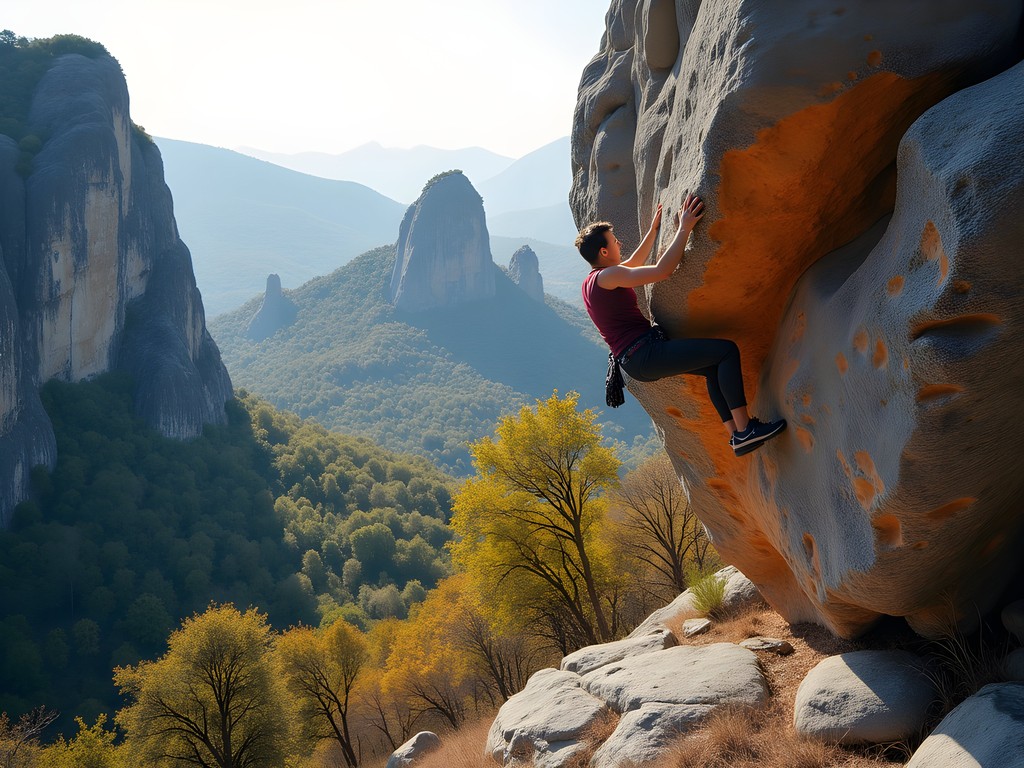
💡 Pro Tips
- Visit Ziogas' shop for current information on which areas are open—some close seasonally for bird nesting
- Bring your own gear—rental options are limited and often poor quality
- Always check for loose rock, especially on less-frequented routes
Finding Stillness: Night Photography in Forbidden Zones
Perhaps my most treasured Meteora experiences came after dark, when day-trippers had departed and even the monasteries fell silent. While official rules prohibit wandering the formations after sunset, local guides whispered of exceptions for serious photographers who respect the landscape.
Armed with this knowledge and my night photography gear (whose exceptional low-light performance has revolutionized my night photography), I ventured out on a moonless night to capture Meteora as few ever see it. The camera's incredible ISO performance allowed me to capture the Milky Way arching over the monasteries without the light pollution that plagues so many destinations.
I discovered a perfect spot for night photography on a flat rock outcropping locals call 'The Priest's Table'—so named for its altar-like shape. From here, the Great Meteoron monastery was perfectly positioned against the northern sky, occasionally illuminated by distant lightning from storms over the mountains.
The real magic happened around 3 AM when monks began their pre-dawn prayers, and tiny windows in the monasteries glowed with warm light against the star-filled sky. I captured a time-lapse sequence showing these lights appearing one by one—human devotion awakening while the world slept.
On my final night, I hiked to a remote hermit cave with a natural opening that perfectly framed the stars. Setting up my camera for a long exposure, I sat in contemplative silence, understanding for the first time why Byzantine hermits chose this place. The absolute stillness, broken only by occasional night birds and the whisper of wind through ancient stone doorways, created a meditative atmosphere unlike anything I've experienced elsewhere.
These night sessions required careful planning—headlamps with red lights to preserve night vision, extra batteries against the autumn chill, and precise knowledge of safe paths. But they revealed Meteora's true character: not as a tourist attraction but as a place where the boundary between earth and sky, human and divine, seems remarkably thin.
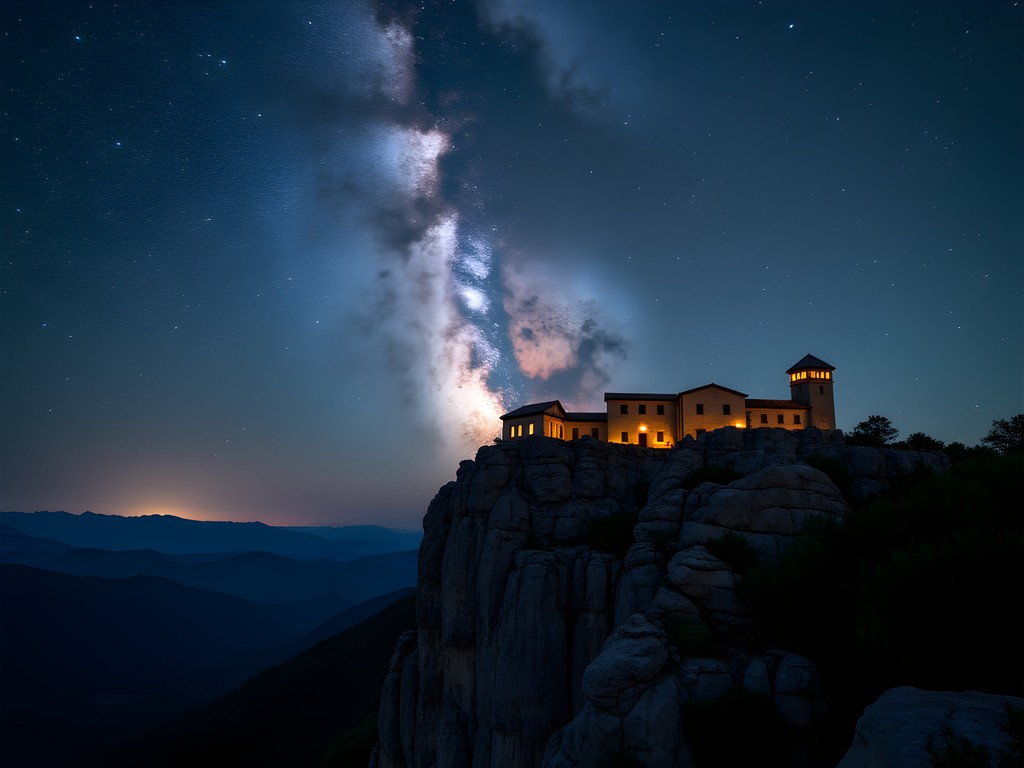
💡 Pro Tips
- Always inform someone of your night photography plans and expected return time
- Use red light headlamps exclusively to maintain night vision and minimize impact
- Bring extra layers—temperatures drop dramatically after sunset, especially in fall
Final Thoughts
As my week in Meteora drew to a close, I found myself lingering at viewpoints, reluctant to leave this landscape where stone and sky create something approaching the sublime. The monasteries deserve their fame—they represent extraordinary human achievement and spiritual devotion. But Meteora's true magic, I discovered, lies in the spaces between—the forgotten caves, hidden viewpoints, and paths less traveled that reveal the landscape's raw power.
For the adventurous solo traveler willing to venture beyond established routes, Meteora offers rare gifts: solitude in an increasingly crowded world, connection to ancient human experience, and landscapes that defy both gravity and description. Pack your hiking boots, bring your sense of wonder, and prepare to discover your own secret corners of this remarkable place. The rocks have stood for millennia; they have stories to tell for those patient enough to listen.
✨ Key Takeaways
- The most magical experiences in Meteora lie beyond the monastery parking lots and official viewpoints
- Fall offers the perfect balance of comfortable hiking weather, fewer crowds, and dramatic lighting
- Local knowledge is invaluable—befriend shopkeepers, artists and guides for insider information
- Proper preparation with maps, gear, and research makes exploring Meteora's hidden side both safer and more rewarding
📋 Practical Information
Best Time to Visit
September-November
Budget Estimate
$50-75/day including accommodation and food
Recommended Duration
5-7 days
Difficulty Level
Moderate To Challenging

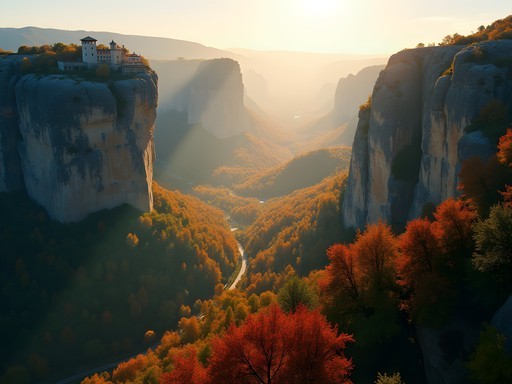
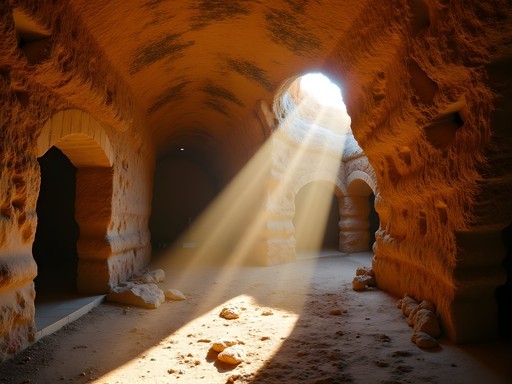

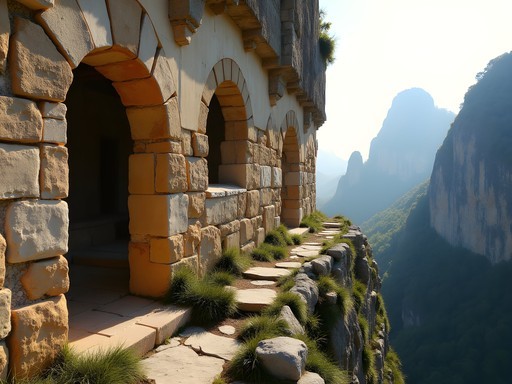
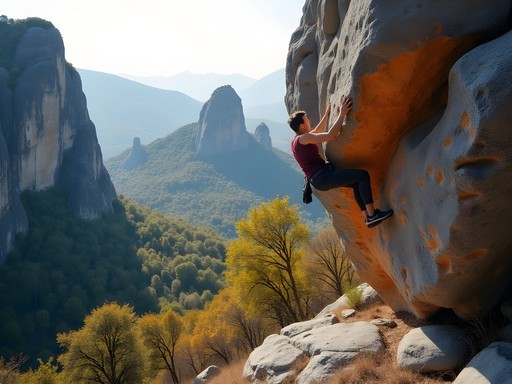
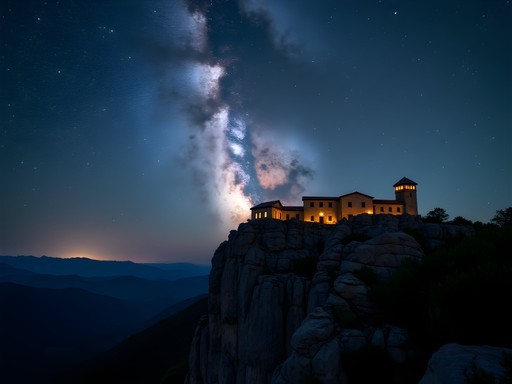




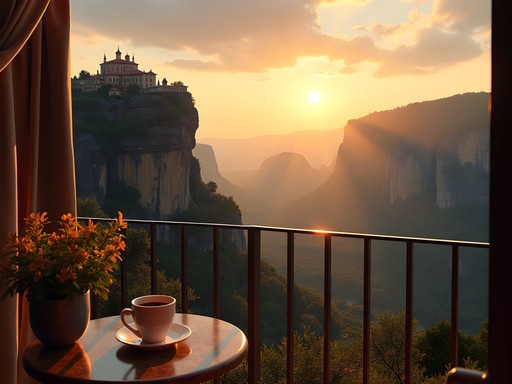





Comments
skystar
That shot of the sunset from the abandoned skete is absolutely breathtaking! How long did you wait to get that perfect light?
wildlegend
Great post! I'm heading to Meteora next month with my partner. How difficult would you say the hike to the hermit caves is? We're reasonably fit but not experienced hikers. Also, did you use a local guide or find these spots on your own? Any recommendations for guides who know these hidden spots?
Lily Thomas
The main hermit caves aren't too difficult to reach - I'd say moderate difficulty with some scrambling. For the more remote ones, I actually hired Dimitris from VisitMeteora for a day - totally worth it! He showed me spots I never would've found alone.
wildlegend
Perfect, thanks! Will look up Dimitris. So excited to see these hidden gems!
Bryce Diaz
Lily, this is exactly the kind of off-path exploration I live for! I was in Meteora last year but only did the standard monastery circuit. Completely missed the hermit caves you mentioned. That sunrise spot near Adrachti pillar sounds incredible too. I'm planning a return trip next spring and will definitely use your directions to find St. Antonios Skete. Did you need any special equipment to access these spots or just good hiking shoes? Also, how early did you head out for sunrise to avoid the crowds?
Lily Thomas
Hey Bryce! For most spots, just good hiking boots and water were enough. I used my headlamp for the pre-dawn hikes which was essential. I usually left around 5am for sunrise spots in summer. The path to St. Antonios is a bit tricky to find - I recommend asking at Roussanou Monastery for directions first!
Bryce Diaz
Thanks for the tip about asking at Roussanou! Will definitely do that. And 5am it is - early starts for the win!
backpackwanderer3329
OMG those hermit caves look insane! Definitely adding this to my bucket list!
skystar
Right?? I didn't even know these existed beyond the monasteries!
dreamadventurer
OMG LILY!!! You've done it again! Your posts always show the places nobody else talks about! I went to Meteora 2 years ago but only saw the main monasteries. Now I HAVE to go back! That photo of the sunrise from the hidden viewpoint is absolutely STUNNING! Did you camp anywhere near there or just get up super early? Also, how difficult was the climb to reach that abandoned skete? I'm not the most athletic person but would totally push myself for views like that!
Lily Thomas
Thanks for the enthusiasm! I didn't camp - just woke up at 4:30am and hiked up in the dark (hence the headlamp recommendation). The skete isn't a difficult climb technically, just follow the path from Roussanou for about 25 minutes. There are a few steeper sections but nothing requiring climbing skills - just take it slow and you'll be fine!
Frank Garcia
Brilliant post that goes beyond the typical Meteora experience! I was there about six months ago and stumbled upon some of these hermit caves by accident. The contrast between the polished, restored monasteries and these raw, forgotten spaces really tells the complete story of Meteora's spiritual history. One tip for anyone heading there: the morning light hitting the eastern faces of the rock formations creates incredible photo opportunities, but you need to be in position before sunrise. I found that staying in Kastraki rather than Kalambaka put me closer to these hidden spots for early morning exploration.
dreamzone
Great post! Is it safe to explore these caves solo or would you recommend going with someone? Planning a trip in October and wondering if I need to book a special tour.
Frank Garcia
Not Lily, but I explored some of these spots solo last year. The main hermit caves that are closer to the monasteries are relatively safe if you're an experienced hiker. For the more remote ones, I'd definitely recommend a local guide. I used hiking GPS which was invaluable when trails weren't marked clearly. October should be perfect weather-wise!
dreamzone
Thanks for the advice! I'm pretty comfortable hiking but will look into a guide for the more remote spots.
vacationhero
Those sunset pics are insane! Adding this to my bucket list ASAP!
Jean Wells
I visited Meteora last year and completely missed these hidden gems. The monasteries are magnificent, but I found myself wishing for quieter spots away from the tour buses. Your detailed directions to the hermit caves will be invaluable for my return visit next spring. I particularly appreciate your notes on timing - sunrise at these formations must be spectacular without the crowds. One question: did you find any local guides knowledgeable about these less-visited areas? My experience was that most guides stick to the standard monastery circuit.
wanderlegend3347
This is exactly what I needed! Going to Meteora next month and was hoping to escape the crowds. Did you need any special equipment to explore those hermit caves? I'm bringing my hiking boots but wondering if I should pack anything else. The abandoned skete looks incredible - was it difficult to find?
Lily Thomas
Thanks! For the hermit caves, just good hiking boots and a headlamp are essential. The paths can be slippery after rain. The skete isn't marked on regular maps, but if you ask at Roussanou Monastery, they can point you in the right direction. Just be respectful as it's still considered a sacred site!
wanderlegend3347
Perfect, thanks so much for the tips! Can't wait to explore.
Venture X
Premium card with 2X miles, $300 travel credit, Priority Pass